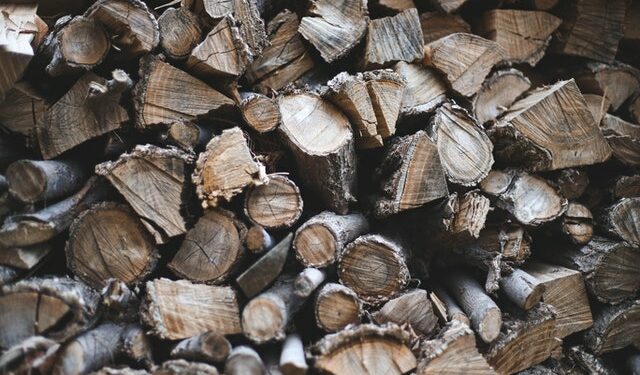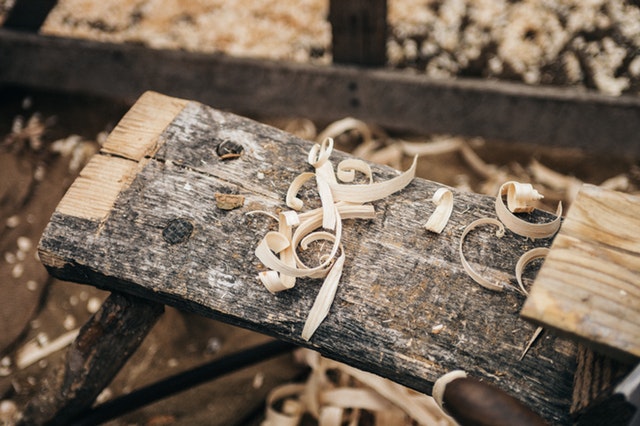How long to season wood

Seasoning wood is a process of drying and curing the timber so that it is ready to be used as lumber or firewood. The time required to properly season wood depends on the type of wood, the climate, and the method of seasoning. In general, hardwoods need to be seasoned for at least 6 months, while softwoods can be dried in as little as 2-3 months.
The first step in seasoning wood is to cut it into the desired lumber or firewood pieces. The surface area of the wood must be exposed in order to allow moisture to escape. If the wood is not cut properly, it will not dry evenly and could lead to warping or cracking.
Once the wood is cut, it should be stacked in a dry, well-ventilated area. The stack should be raised off the ground on a platform or pallets to allow air to circulate underneath. The wood should be covered with a tarp or other breathable material to protect it from the elements.
The amount of time required to season wood will vary depending on the type of wood, the climate, and the method of seasoning. In general, hardwoods need to be seasoned for at least 6 months, while softwoods can be dried in as little as 2-3 months. The best way to determine if the wood is properly seasoned is to check the moisture content with a moisture meter. The ideal moisture content for most lumber is between 15-20%.
There are several methods that can be used to speed up the seasoning process, such as kiln drying or using a solar kiln. Kiln drying is the quickest way to dry wood, but it can be expensive. Solar kilns are a cheaper option, but they require a sunny location and can take several weeks to work. Whichever method you choose, be sure to monitor the moisture content of the wood to ensure that it is drying evenly.
What is seasoning wood and why is it important
Seasoning wood is the process of drying and curing lumber so that is it suitable for use in construction or other projects. Seasoning wood is important because if the lumber is not properly dried and cured, it can warp, crack, or shrink once it is installed. This can cause serious problems with the structure of the project.
2. There are two main methods of seasoning wood: air drying and kiln drying.
Air drying is the cheaper and more traditional method of seasoning wood. It involves stacking the lumber in a well-ventilated area and allowing it to dry naturally. This process can take several months, and the lumber must be protected from the elements during this time.
Kiln drying is a faster method of seasoning wood. The lumber is placed in a controlled environment and heated to a specific temperature. This speeds up the evaporation of moisture from the wood and helps to prevent warping and cracking. Kiln drying is more expensive than air drying, but it can be worth the investment if you need your lumber to be ready for use more quickly.
3. Seasoning wood is an important step in the construction process.
If you are working with lumber that has not been properly seasoned, you may experience problems with warping, cracking, or shrinking. This can cause serious problems with the structure of your project. It is important to make sure that the lumber you are using has been properly dried and cured before you begin working with it.
4. There are two main methods of seasoning wood: air drying and kiln drying.
Air drying is the cheaper and more traditional method of seasoning wood. It involves stacking the lumber in a well-ventilated area and allowing it to dry naturally. This process can take several months, and the lumber must be protected from the elements during this time.
Kiln drying is a faster method of seasoning wood. The lumber is placed in a controlled environment and heated to a specific temperature. This speeds up the evaporation of moisture from the wood and helps to prevent warping and cracking. Kiln drying is more expensive than air drying, but it can be worth the investment if you need your lumber to be ready for use more quickly.
5. Seasoning wood is an important step in the construction process.
If you are working with lumber that has not been properly seasoned, you may experience problems with warping, cracking, or shrinking. This can cause serious problems with the structure of your project. It is important to make sure that the lumber you are using has been properly dried and cured before you begin working with it. Seasoning wood is the process of drying and curing lumber so that is it suitable for use in construction or other projects. Seasoning wood is important because if the lumber is not properly dried and cured, it can warp, crack, or shrink once it is installed. This can cause serious problems with the structure of the project. There are two main methods of seasoning wood: air drying and kiln drying. Air drying is the cheaper and more traditional method of seasoning wood. It involves stacking the lumber in a well-ventilated area and allowing it to dry naturally. This process can take several months, and the lumber must be protected from the elements during this time. Kiln drying is a faster method of seasoning wood. The lumber is placed in a controlled environment and heated to a specific temperature. This speeds up the evaporation of moisture from the wood and helps to prevent warping and cracking. Kiln drying is more expensive than air drying, but it can be worth the investment if you need your lumber to be ready for use more quickly. Seasoning wood is an important step in the construction process and there are two main methods of seasoning wood: air drying and kiln drying.
The different types of wood that can be seasoned
There are many different types of wood that can be seasoned, each with its own unique benefits. Softwoods, such as pine and spruce, are ideal for beginners as they are easy to work with and produce good results. Hardwoods, such as oak and maple, require more skill to work with but produce superior results. Seasoning your own wood is a great way to save money and ensure that your woodworking projects are of the highest quality.
Seasoning wood is important because it helps to protect the wood from rotting and decaying. There are different types of wood that can be seasoned, including cedar, pine, and oak. Each type of wood has a different flavor that will add to the food that is being cooked. Seasoning also helps to keep the wood from drying out and cracking.
Cedar is a type of softwood that is commonly used for grilling. It has a distinct flavor that pairs well with meats, fish, and poultry. When cedar is burned, it produces a bright red smoke that can add color to food.
Pine is another type of softwood that is often used for smoking. It has a sweeter flavor than cedar and pairs well with pork, poultry, and seafood. Pine wood produces a yellow smoke when burned.
Oak is a type of hardwood that is often used for barbecue. It has a strong flavor that pairs well with beef and lamb. Oak wood produces a dark smoke when burned.
Maple is another type of hardwood that is often used for grilling. It has a sweet flavor that pairs well with poultry and pork. Maple wood produces a light smoke when burned.
Seasoning your own wood is a great way to save money and ensure that your woodworking projects are of the highest quality. There are many different types of wood that can be seasoned, each with its own unique benefits. Softwoods, such as pine and spruce, are ideal for beginners as they are easy to work with and produce good results. Hardwoods, such as oak and maple, require more skill to work with but produce superior results. Seasoning your own wood is a great way to save money and ensure that your woodworking projects are of the highest quality.
How to season wood using a smoker or oven
Wood can be seasoned in different ways, depending on the tool you are using. If you are using a smoker, follow these steps:
1. Start by choosing the right wood for the dish you are cooking.
2. Cut the wood into small pieces, no more than 2 inches thick.
3. Soak the wood in water for at least an hour.
4. Drain the water and place the wood on a rack in the smoker.
5. Smoke the wood at a low temperature for 3-4 hours.
6. Remove the wood from the smoker and let it cool before using it in your recipe.
If you are using an oven, follow these steps:
1. Preheat the oven to 200 degrees Fahrenheit.
2. Cut the wood into small pieces, no more than 2 inches thick.
3. Soak the wood in water for at least an hour.
4. Drain the water and place the wood on a rack in the oven.
5. Bake the wood in the oven for 3-4 hours.
6. Remove the wood from the oven and let it cool before using it in your recipe.
The benefits of seasoning your own wood
Seasoning your own wood has many benefits. It is cheaper than buying pre-seasoned wood, and you can control the quality of the seasoning process. Seasoning also helps to prolong the life of your wood-burning stove or fireplace. The different types of wood that can be seasoned include hardwoods, softwoods, and green wood. Hardwoods are the best type of wood to use for seasoning, as they burn slowly and evenly. Softwoods burn quickly and unevenly, making them less ideal for seasoning. Green wood is unseasoned wood that has not been dried or treated. It is the most difficult type of wood to season, but it can be done with care and patience.
Tips for keeping your smoker or oven clean while seasoning wood
Smoking or oven seasoning wood can be a messy process, but with these tips you can keep your smoker or oven clean. Make sure to remove the ashes from the firebox after each use. If there is any build-up of grease or residue, use a wire brush to clean it off. You may also want to season your wood in a foil-lined pan to make cleanup easier. Finally, be sure to clean your smoker or oven after each use to prevent the build-up of harmful chemicals.
FAQs about seasoning wood
Just as different foods require different methods of preparation, the same is true for wood. There are many different types of wood, and each requires a different approach to seasoning in order to achieve the desired results. Some woods, such as oak, are hard and dense and can take months or even years to dry properly. Other woods, such as pine, are much softer and can be dried within a matter of weeks.
The most important thing to remember when seasoning wood is that the goal is to evenly distribute moisture throughout the entire piece of wood. This can be accomplished by slowly air-drying the wood or by using a kiln. Depending on the type of wood, one method may be more effective than the other.
One of the most common questions we get asked is how long does it take to season wood? The answer, unfortunately, is that it depends. Seasoning times can vary greatly depending on the type of wood, the thickness of the lumber, and the methods used. In general, however, it takes anywhere from a few weeks to several months to properly season wood.
If you’re planning on seasoning wood, it’s important to have patience and be prepared for the process to take some time. But in the end, the results will be worth it!
There are a few methods that can be used for seasoning wood, but the most common are air drying and kiln drying.
Air drying is the process of slowly letting the wood dry out on its own, typically over the course of several weeks or months. This method is often used for hardwoods, such as oak, that can take a long time to properly dry.
Kiln drying is a more accelerated method of drying wood, and it can be used for both hardwoods and softwoods. The lumber is placed in a large chamber where it is exposed to heat and circulating air. This causes the moisture in the wood to evaporate more quickly, and the lumber can be dried within a matter of days or weeks.
Both air drying and kiln drying are effective methods for seasoning wood, but which one you use will depend on the type of wood and your personal preferences. If you’re in a hurry, kiln drying is the best option. But if you’re willing to wait a bit longer, air drying is a perfectly viable option.
How long to season wood
Wood needs to be seasoned in order to achieve the best results when burning. The length of time it takes to season wood will vary depending on the type of wood and the method used. In general, however, seasoning times can range from a few weeks to several months. Patience is key when seasoning wood, as the process can take some time. But in the end, you’ll be rewarded with beautiful flames and a warm home!






